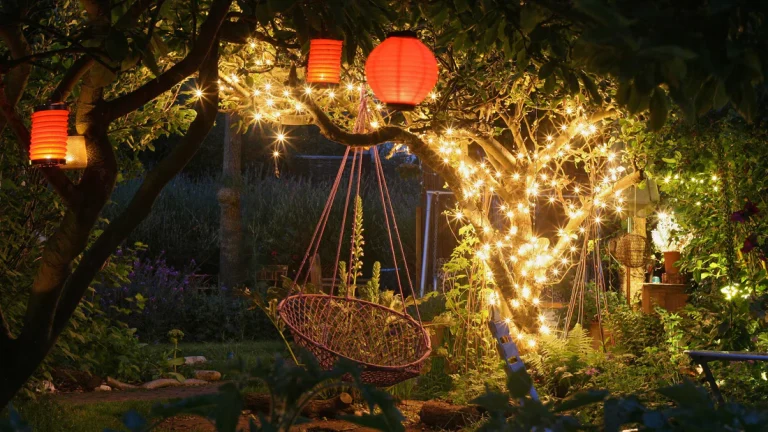
In today’s fast-paced world, finding moments of peace and tranquility can feel like an elusive dream. Many seek refuge in the comforting embrace of nature, longing for a personal sanctuary to retreat from life’s daily hustle. A Zen garden, with its minimalist and serene design, offers a perfect solution. Transforming a corner of your outdoor space into a Zen garden can not only enhance the landscape but also encourage mindfulness and meditation. In this blog post, we’ll explore the essentials of creating your own Zen garden, guided by principles that have been admired for centuries.
Understanding the Zen Garden
Originating in Japan, Zen gardens, also known as Japanese rock gardens or “karesansui,” are designed to stimulate meditation. Unlike traditional gardens overflowing with lush vegetation, Zen gardens emphasize simplicity, using sand or gravel represent water, rocks symbolize islands or mountains, and minimal plants for added effect. These elements, thoughtfully arranged, create a tranquil and contemplative space that promotes mental calmness.
Step-by-Step Guide to Creating Your Zen Garden
1. Choose the Perfect Location
The first step in creating a Zen garden is choosing a suitable location. Ideally, this should be a quiet section of your yard, away from the bustling areas, and where you can easily seek solitude. Consider a spot that receives gentle sunlight — the interplay of light and shadows throughout the day enhances the garden’s meditative quality.
2. Define the Perimeter
Once you’ve selected your location, define the perimeter of your Zen garden. Traditional Zen gardens are often rectangular, but you can shape it to fit your space. Use natural materials like bamboo or wood to demarcate boundaries, reinforcing the connection to nature. A simple stone or wooden fence provides a sense of enclosure and focus.
3. Prepare the Base
The foundation of a Zen garden is typically a layer of sand or gravel, symbolizing water. Clear the area of grass and weeds, leveling the space to create a uniform base. Lay down a weed barrier fabric to prevent future growth from disturbing the pristine appearance of your garden. Then spread a layer of sand or gravel — white sand is often preferred for its purity and reflective quality, while gravel can offer a robust feel.
4. Select and Arrange Stones
Stones are central to a Zen garden’s design, representing mountains or islands. Choose them carefully, considering their size, shape, and color, and how they relate to each other visually. Typically, stones are grouped in arrangements of odd numbers to avoid symmetry, which disrupts the natural harmony. Place these stones thoughtfully — larger stones could serve as focal points, while smaller stones accentuate paths or patterns.
5. Introduce Minimalist Plant Life
While some Zen gardens may exclude vegetation altogether, strategically placing plants can enhance the aesthetics and authenticity of your garden. Opt for low-maintenance plants like moss, ferns, or small, pruned trees like Japanese Maple or Bonsai, which fit well with the garden’s minimalist ethos. Their lush greenery contrasts beautifully with the neutral sands and stones, adding life without overwhelming the space.
6. Rake with Purpose
Raking sand or gravel in patterns is an integral Zen garden activity, often conceived as a meditative practice. Create designs that emulate flowing water — simple lines, spirals, or circular patterns to instill a sense of motion and calm. This act of raking requires mindfulness and can become a daily ritual to reflect your mood or current state of mind.
7. Incorporate Additional Elements
Additional elements that can enhance your Zen garden experience include lanterns, water features, sculptures, or bridges — all chosen for their simplicity. Consider integrating a water basin or a trickling fountain to introduce sound, promoting a deeper state of relaxation. The serenity induced by water complements the tactile experience of grooming the garden.
The Benefits of a Zen Garden
Owning a Zen garden transcends aesthetic appeal. It provides a personal retreat within your living space, offering numerous benefits that extend to mental health and well-being. Engaging with your Zen garden invites a moment to pause, practice mindfulness, and experience peace, ultimately decreasing stress and enhancing your mood. The design encourages introspection, making it an ideal companion for meditation.
Moreover, the simplicity of a Zen garden reduces maintenance demands, allowing you to focus on the introspective activities it inspires rather than exhaustive gardening tasks. The sand, stone, and scant plant life thrive in a minimalist environment, requiring minimal watering, trimming, or upkeep.
Conclusion
Creating a Zen garden is not merely about constructing a physical space but rather cultivating a haven for peace and mindfulness within your own home. With careful planning and thoughtful arrangement, your Zen garden can serve as an eternal source of tranquility, offering an escape from the relentless pace of modern life. Whether you choose to meditate amidst its calm or simply enjoy the visual and spiritual comfort it provides, a Zen garden enriches your connection to both nature and the inner self.
Embark on this journey of creation and find solace in the quietude of your personal Zen garden — a timeless retreat for the soul.













